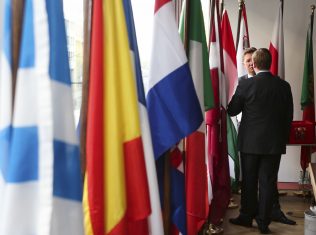
December 18, 2008 • Analysis •
The Georgian debacle in August has left several EU member states openly sceptical about pursuing cooperation at resumed on December 2. But both sides have been quietly applying themselves to getting things moving again.
Just before the bilateral summit in Nice last month, Gazprom announced it would cut delivery prices from 2009. It was a clear acknowledgment of Russian-EU interdependence on energy.
The auguries are especially good in the civil nuclear sector, where cooperation may oil the wheels in negotiations about oil and gas.
Despite continuing Green opposition, there is growing awareness in the EU institutions that nuclear energy is the only practical way forward; about 10 reactors are under construction in the EU.
Nuclear already generates some two-thirds of the EU’s CO2- free electricity. Nuclear, Energy Commissioner Andris Piebalgs acknowledged in November, was « the main source (of) base-load electricity at a constant rate and at all times through the year. »
Nuclear, in short, is less vulnerable to fuel-price changes and enhances security of supply. The Russians agree. Alexei Grigoriev, Deputy General Director of Tenex, a key company in the Russian uranium sector, said in Paris a few days ago that « nuclear power will have to represent 30% of the energy used by Russia by 2025/2030 ».
The way is now being cleared for western investment in civil nuclear projects in Russia. « We will have to unite to face growing needs, » Sergei Kirienko, Managing Director of the Russian Nuclear Energy State Corporation (Rosatom) told the same Thomas More Institute meeting in Paris.
If both sides mean business, a good start would be to abrogate the Corfu Declaration limiting imports of Russian fissionable material to 20% – a totally outdated quota given that current imports vary between 30% and 45% of what is needed to keep European nuclear power plants going.
Meanwhile there are already signs of a new spirit of cooperation on the Russian side. The showcase uranium enrichment centre at Angarsk in Siberia, one of the first in Russia to be placed under IAEA safeguards, involves several international partners, including Kazakhstan and probably Iran (this is still in negotiation.)
Russia is also calling for partners in the project to build nuclear power plants in its enclave in Kaliningrad.
The EU would be wise to engage itself in this, not least to ensure the plant is built to the highest standards, and as Commissioner Piebalgs boasts: « the EU nuclear industry has the world technological leadership covering all stages of the nuclear cycle. »
